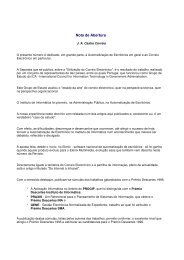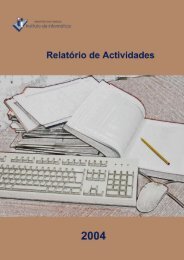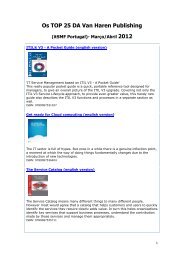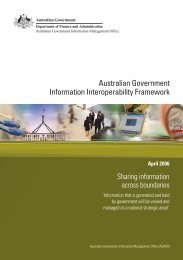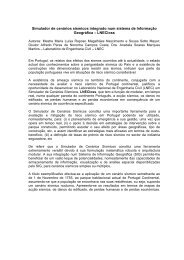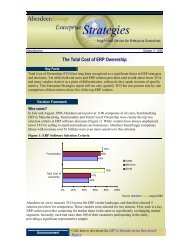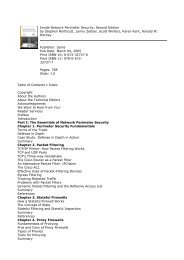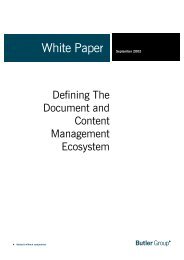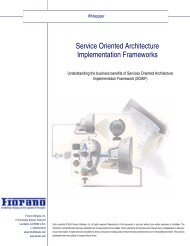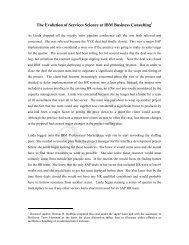OECD Peer Review of E-Government in Denmark - ePractice.eu
OECD Peer Review of E-Government in Denmark - ePractice.eu
OECD Peer Review of E-Government in Denmark - ePractice.eu
You also want an ePaper? Increase the reach of your titles
YUMPU automatically turns print PDFs into web optimized ePapers that Google loves.
Figure 7.2 Source and type <strong>of</strong> e-government demand<br />
Onl<strong>in</strong>e services (i.e. permits, grants,<br />
procurement, taxes, applications,<br />
payments, etc.)<br />
Information provision (i.e. current laws<br />
and regulations, government <strong>of</strong>fices<br />
and services, statistical <strong>in</strong>formation)<br />
Consultation for services (i.e. feedback<br />
on service quality)<br />
Participation <strong>in</strong> policy mak<strong>in</strong>g (i.e.<br />
onl<strong>in</strong>e policy discussion forums)<br />
Consultation for policy mak<strong>in</strong>g (i.e.<br />
comments on draft laws)<br />
0% 10% 20% 30% 40% 50% 60% 70% 80% 90% 100%<br />
Citizens Bus<strong>in</strong>esses <strong>Government</strong> organisations NGO/Civil society Not applicable<br />
Source: <strong>OECD</strong> E-<strong>Government</strong> Survey: <strong>Denmark</strong>.<br />
Organisations’ assessment <strong>of</strong> demand<br />
<strong>OECD</strong> survey respondents <strong>in</strong>dicated that the most widely used method for assess<strong>in</strong>g demand for<br />
e-government was count<strong>in</strong>g hits on Web sites (used by 63% <strong>of</strong> respondents), significantly ahead <strong>of</strong><br />
user surveys, government-wide statistics and electronic feedback mechanisms.<br />
Clearly, organisations use a variety <strong>of</strong> methods to assess demand, although it is not known to<br />
what extent they are us<strong>in</strong>g either just one or a comb<strong>in</strong>ation <strong>of</strong> these or other methods. What is<br />
important to note is that the most heavily used approach is the one that is least useful <strong>in</strong> terms <strong>of</strong><br />
help<strong>in</strong>g organisations learn about their service users, as it does not enable understand<strong>in</strong>g <strong>of</strong> users’<br />
actual service needs, onl<strong>in</strong>e capabilities and priorities. Used on its own, measurement <strong>of</strong> Web hits can<br />
only reveal the historical demand for a pre-exist<strong>in</strong>g “menu” <strong>of</strong> e-government services, rather than<br />
provide a forward-look<strong>in</strong>g view <strong>of</strong> e-government needs and demands like that <strong>of</strong>fered by the studies<br />
discussed earlier <strong>in</strong> this chapter. Furthermore, assessment <strong>of</strong> Web hits conf<strong>in</strong>es analysis to those<br />
e-government services delivered through Web sites, rather than through all the delivery channels that<br />
e-government can enable and support.<br />
126



